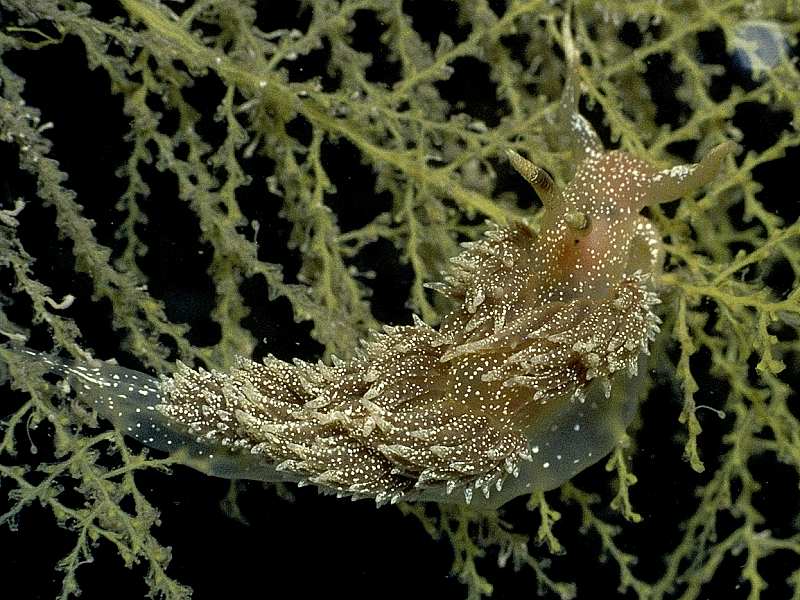| MOLLUSCA : Nudibranchia : Facelinidae | SNAILS, SLUGS, ETC. |
Facelina annulicornis (Chamisso & Eysenhardt, 1821)
 |
| Facelina annulicornis |
Description: The body is translucent with scattered spots of white pigment. Around the mouth the skin has a rose coloured hue. The rhinophores are lamellate, both the rhinophoral and oral tentacles are tipped with white pigment. The digestive gland is visible through the ceratal epidermis, it may be brown, orange or green in colour. The adults can grow to 40mm in length.
Habitat: This uncommon species is known to feed on a variety of hydroids, and also to attack and devour other nudibranchs, especially Coryphella species.
Distribution: A southern species in the British Isles, with records extending northwards along the west coast of Ireland to Donegal Bay and Portrush, Co Antrim. Further distribution south to the Mediterranean.
Key Identification Features:
- Brown animal with regular white speckles all over body and cerata.
- Rhinophores with sloping lamellae.
Distribution Map from NBN: Facelina annulicornis at National Biodiversity Network mapping facility, data for UK.
iNaturalist: Facelina annulicornis at iNaturalist World Species Observations database.
GBIF data for Facelina annulicornis
WoRMS: Facelina annulicornis at World Register of Marine Species. Accepted name: Facelina annulicornis (Chamisso & Eysenhardt, 1821). AphiaID: 139907.
Classification: Biota; Animalia; Mollusca; Gastropoda; Heterobranchia; Euthyneura; Ringipleura; Nudipleura; Nudibranchia; Cladobranchia; Aeolidioidea; Facelinidae; Facelina
| Previous species | Next species |
| Picton, B.E. & Morrow, C.C. (2024). Facelina annulicornis. (Chamisso & Eysenhardt, 1821). [In] Encyclopedia of Marine Life of Britain and Ireland. https://www2.habitas.org.uk/marbiop-ni/speciesaccounts.php?item=W15250. Accessed on 2025-04-15 |